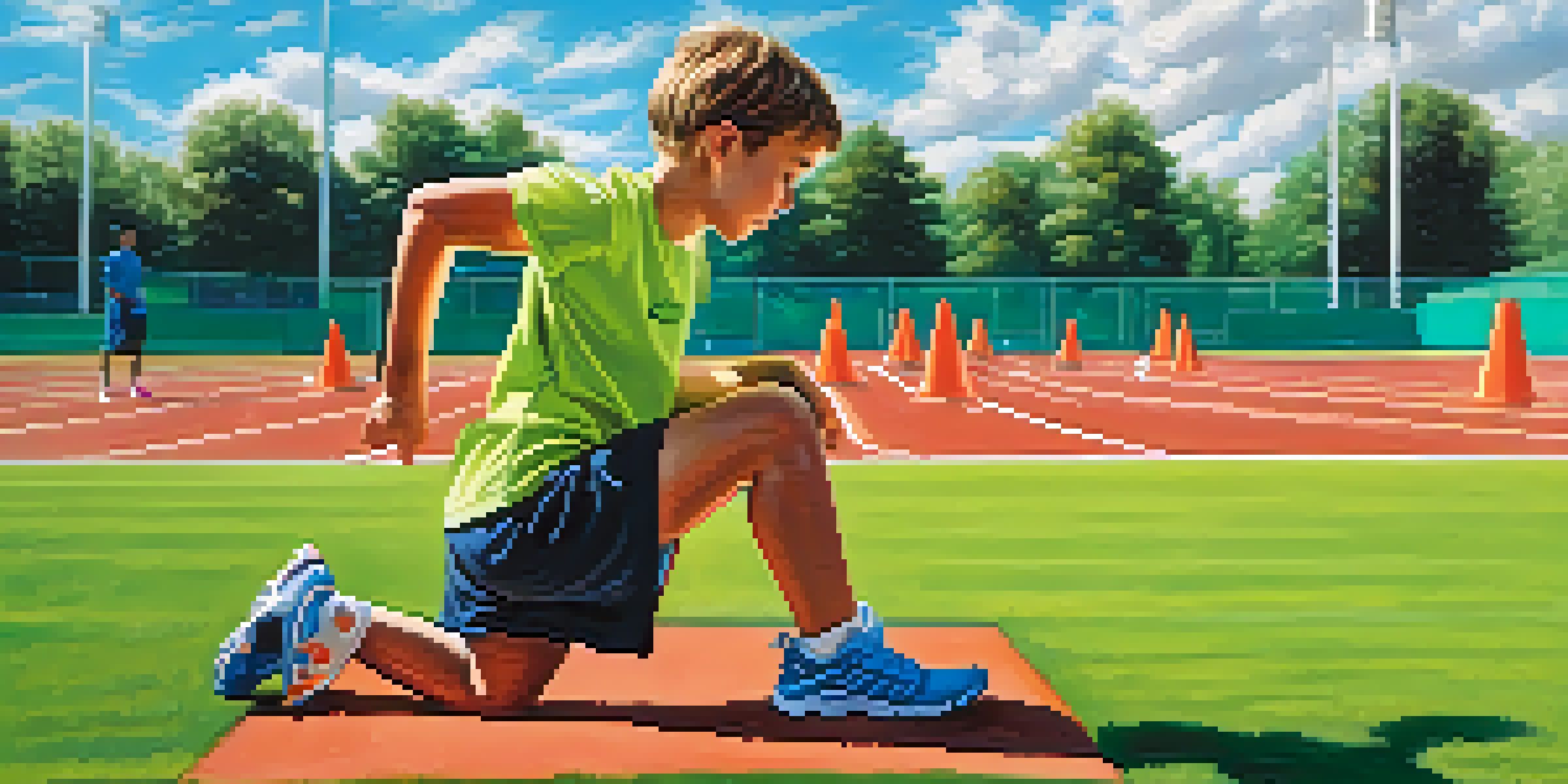Understanding the Risk Factors for Sports-Related Injuries

The Importance of Recognizing Risk Factors in Sports
Understanding the risk factors for sports-related injuries is crucial for athletes of all levels. These factors can help players, coaches, and parents take preventive measures to reduce injury risks. By being aware of potential hazards, individuals can make informed decisions about training, equipment, and safety practices.
In sports, the greatest risk is not taking one at all.
Sports injuries can not only sideline an athlete but also have long-term physical and emotional effects. Recognizing the specific risk factors associated with different sports can empower athletes to adopt safer practices. This awareness is a vital step toward fostering a culture of safety in sports environments.
Moreover, understanding these risks can lead to better training methods and improved performance. Athletes who are educated about the risks specific to their sport can develop strategies to minimize those risks, ultimately enhancing their ability to play safely and effectively.
Common Risk Factors for Sports Injuries
Several common risk factors contribute to sports injuries, including age, gender, and physical conditioning. For instance, young athletes may be more susceptible to certain injuries due to their developing bodies and lack of experience. Similarly, gender differences can affect injury rates, with some sports presenting higher risks for males or females.

Another critical factor is physical conditioning; athletes who are not properly conditioned for their sport are at a higher risk for injuries. This includes aspects like flexibility, strength, and endurance, which play a significant role in an athlete's overall performance. Neglecting these elements can lead to overuse injuries, sprains, and strains.
Recognizing Risk Factors is Key
Understanding the risk factors for sports injuries empowers athletes and coaches to make informed decisions that enhance safety.
Additionally, environmental factors such as playing surfaces, weather conditions, and equipment quality can also influence injury risks. For example, playing on a wet or uneven field can increase the likelihood of falls and sprains, while poorly fitting gear can lead to discomfort and injuries.
The Role of Training and Preparation in Injury Prevention
Proper training and preparation are vital components in reducing the risk of sports injuries. Athletes should engage in a well-rounded training regimen that includes strength training, flexibility exercises, and skill development. This holistic approach not only improves performance but also helps to prepare the body for the demands of the sport.
An ounce of prevention is worth a pound of cure.
Incorporating warm-up and cool-down routines into training sessions can significantly decrease injury risks. Warm-ups increase blood flow to muscles, enhancing flexibility and readiness, while cool-downs help in recovery and muscle relaxation. Both routines are essential to create a balanced training program.
Coaches and trainers play a critical role in ensuring that athletes receive appropriate training. They can identify individual strengths and weaknesses, tailoring training sessions to address specific needs. This personalized approach can help athletes build resilience against injuries.
The Impact of Previous Injuries on Future Risks
Athletes with a history of injuries are often at a higher risk for future injuries. This phenomenon, known as 're-injury risk,' can be attributed to lingering weaknesses or imbalances created by previous injuries. Understanding this connection is essential for both athletes and medical professionals in developing effective recovery plans.
For example, a player who has previously suffered a knee injury may have altered movement patterns as a result. These compensatory movements can put additional strain on other parts of the body, leading to new injuries. Thus, it’s crucial to address not just the initial injury but also the functional movements associated with it.
Training Reduces Injury Risks
A well-rounded training regimen including warm-ups, cool-downs, and personalized coaching can significantly lower the chances of sports injuries.
Rehabilitation programs focused on strengthening and restoring full function are essential in mitigating this risk. A well-designed rehab program can facilitate a smoother transition back to sports while reducing the likelihood of re-injury. Continuous monitoring and gradual reintroduction of sports activities can further enhance safety.
Psychological Factors Influencing Injury Risks
Psychological factors can significantly impact an athlete's injury risk, often overlooked in traditional discussions around physical safety. Anxiety, stress, and mental fatigue can lead to decreased focus and poor decision-making on the field. This lack of concentration can increase the likelihood of accidents and injuries.
Furthermore, athletes who are under pressure to perform may push themselves beyond their limits, ignoring their bodies' warning signs. This can lead to overexertion and subsequent injuries, particularly in high-stakes environments. Recognizing the mental aspects of sports is essential for a holistic approach to injury prevention.
Implementing mental training techniques, such as visualization and mindfulness, can help athletes manage stress and improve focus. Coaches should encourage open discussions about mental health, creating an environment where athletes feel comfortable addressing their psychological well-being.
The Importance of Proper Equipment in Injury Prevention
Using the right equipment is fundamental to minimizing injury risks in sports. From properly fitting shoes to appropriate protective gear, the right equipment can make all the difference in an athlete's safety. For example, wearing a well-fitted helmet in contact sports can prevent serious head injuries.
Additionally, equipment maintenance is crucial. Worn-out gear can lose its protective qualities, leading to increased injury risks. Regular checks on equipment, such as cleats or pads, ensure that athletes are always performing at their best with the safest gear available.
Proper Equipment is Essential
Using appropriate and well-maintained equipment is crucial for minimizing injury risks and ensuring athlete safety.
Moreover, understanding the specific requirements of each sport is key to selecting appropriate equipment. Different sports may have varying safety standards, and being informed about the latest advancements in equipment technology can enhance safety. Athletes should prioritize quality and suitability over trends to safeguard their health.
Creating a Culture of Safety in Sports
Building a culture of safety in sports involves everyone — athletes, coaches, parents, and organizations. From grassroots levels to professional teams, establishing protocols for injury prevention is essential. This collective responsibility fosters an environment where safety is prioritized, reducing risks for all participants.
Education plays a pivotal role in promoting safety awareness. Workshops and training sessions for coaches and athletes can highlight best practices for injury prevention. By sharing knowledge about risk factors and safety measures, everyone can contribute to a safer sports experience.

Furthermore, encouraging open communication about injuries and safety concerns is vital. Athletes should feel empowered to report any discomfort or fear without the stigma of appearing weak. A supportive culture not only enhances performance but also prioritizes the health and well-being of all involved.